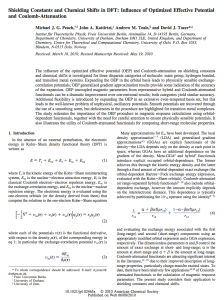Shielding constants and chemical shifts in DFT: Influence of optimized effective potential and Coulomb-attenuation
Michael J. G. Peach, John A. Kattirtzi, Andrew M. Teale, David J. Tozer, J. Phys. Chem. A, 114, 7179–7186, 2010.
Commentary
Citations
7
Citations
7
This project was one of the first applications of the optimised effective potential (OEP) methodology of Yang and Wu to Coulomb-attenuated functionals, and was the first to combine CAM-B3LYP and transition-metal NMR. It reiterates the importance of using the OEP procedure when evaluating magnetic response parameters from functionals containing exact orbital exchange, and evaluates the practicability of several approaches for avoiding unphysical potentials.
Further information, including details of subsequent work in this area, can be found on the research page. For the abstract, and access to the full text, see below.


Leave a Comment